#solo: niel
Text



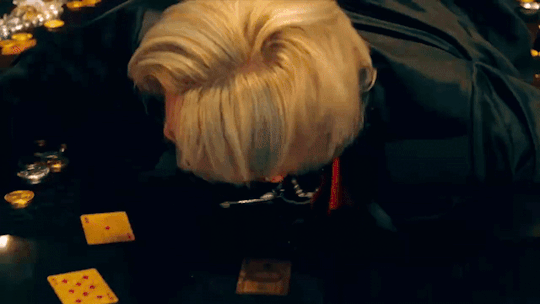
Niel - A to Z
#niel#teen top#era: a to z#solo: niel#solo: niel: a to z#teaser#221126#kpop#k-pop#gifs#gif#my gif#my gifs#kpop gifs#kpop gif#k-pop gifs#k-pop gif
21 notes
·
View notes
Text
youtube
Niel | Twitter
221126
@NEWENTRY_Niel:
“니엘 NIEL The 3rd Mini Album【A to Z】
'A to Z' M/V Teaser
➫ youtu.be/VkDSQFQ1cdQ
Album Release Date
➫ 2022. 11. 28 12PM(KST)
#니엘 #NIEL #AtoZ”
#niel#teen top#solo: niel#era: a to z#solo: niel: a to z#221126#@newentry_niel#twitter#teaser: a to z#solo: niel: a to z: teaser#Youtube
19 notes
·
View notes
Text





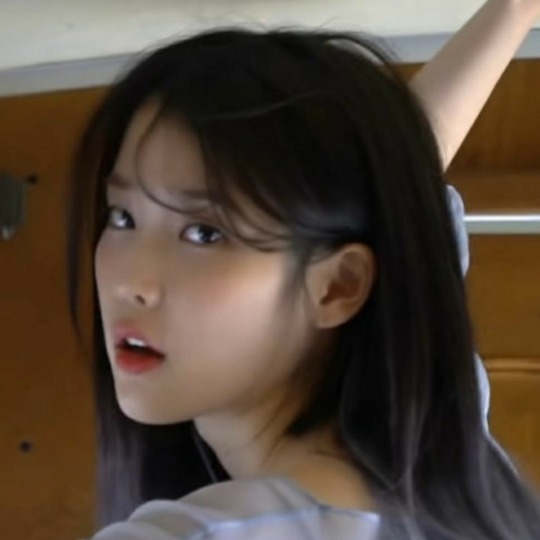



ㅤㅤiu lq icons ᶻ 𝘇 𐰁
#niel#mngki#icons#kpop icons#random icons#lq icons#twitter icons#iu#iu kpop#iu solo#iu icons#iu lq icons#iu packs#iu low quality
35 notes
·
View notes
Text
if runie releases new music... it better NOT be embarazzing
4 notes
·
View notes
Text
girl if you so much as lay a FINGER on april I will cry
1 note
·
View note
Text
youtube
On January 28th 1908 Jimmy Shand, Scottish country dance band leader was born.
Shand was a musician who played traditional Scottish dance music on the accordion.
Born James Shand in East Wemyss in Fife, son of a farm ploughman turned miner. One of nine children, they soon moved to the burgh of Auchtermuchty.The town is also known as the birthplace of the brothers Charlie and Craig Reid of The Proclaimers and now boasts a larger than life-sized sculpture of Shand. His father was a skilled melodeon player. Jimmy started with the mouth organ and soon played the fiddle. At the age of 14 he had to leave school and go down the mines. He played at social events and competitions. His enthusiasm for motor-bikes turned to an advantage when he played for events all round Fife. In 1926 he did benefit gigs for striking miners and was consequently prevented from returning to colliery work.
One day Jimmy and a friend were admiring the instruments in the window of Forbes' Music Shop in Dundee. His friend said "It wouldn't cost you to try one". Jimmy walked in and strapped on an accordion. The owner heard Jimmy and immediately offered him a job as travelling salesman and debt-collector. He soon acquired a van and drove all over the north of Scotland. He switched to the British chromatic button accordion, an instrument he stuck with for the rest of his life.
Shand failed an audition for the BBC because he kept time with his foot. At a time when gramophones were very much luxury items he made two records for the Regal Zonophone label in 1933. His career took off when he switched to making 78s for the Beltona label between 1935 and 1940. Most of the Beltona recordings were solo, but he experimented with small bands. This boosted sales. He appeared in a promo film shown in cinemas. While the image showed his fingers moving in a blur, Jimmy was disappointed to hear the sound track playing a slow air.
Jimmy was prevented from joining the RAF by a digestive disorder, and spent the war years in the Fire Service. On New Year's morning 1945 he made his first broadcast with "Jimmy Shand and Band". This was the first of many such BBC radio and television appearances.
After the war he became a full-time musician and adopted a punishing life-style later adopted by rock bands. He would play Inverness one night, London the next night and still drive the van back, at breakneck speed, to bed in Dundee.
He took his trademark bald head, Buddy Holly specs and full kilted regalia, Scottish reels, waltzes, jigs and strathspeys to North America, Australia and New Zealand, including Carnegie Hall in New York
In 1972 he went into semi-retirement. From then he played only small venues in out of the way places for a reduced fee. He was made a freeman of Auchtermuchty in 1974, North East Fife in 1980 and Fife in 1998. He became Sir Jimmy Shand in 1999. His portrait is in the Scottish National Gallery, close to Niel Gow.
In 1983 Jimmy released a retrospective album with the cheeky title "The First 50 years". At the age of 88 he recorded an album and video with his son, "Dancing with the Shands".
More than 330 compositions are credited to Jimmy Shand. He recorded more tracks than the Beatles and Elvis Presley combined. In 1985, British Rail named a locomotive Jimmy Shand.
Dissatisfied with the chromatic button-key accordions available on the market in the 1940s so he designed his own one. The Hohner company still manufactures the "Shand Morino" to his specifications.
The statue, as I earlier said is in Auchtermuchty, there is also a memorial in East Wemyss/
How many of you out there remember doing "Strip theWillow" during our school years, or even after at a cèilidh
20 notes
·
View notes
Text
Quel nucleo finale di indeterminazione
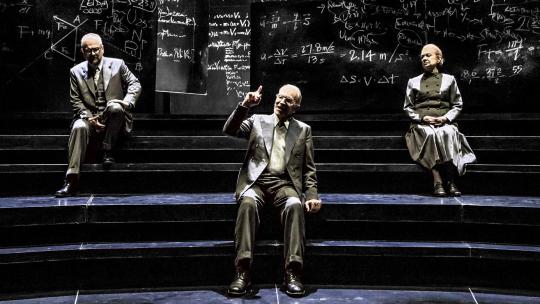
Bohr: Prima che possiamo afferrare qualcosa, la nostra vita è finita.
Heisenberg: Prima che possiamo capire chi e che cosa siamo, siamo finiti e ridotti in polvere.
Bohr: Sepolti da tutta la polvere che abbiamo sollevato.
Margrethe: E prima o poi, verrà il tempo in cui tutti i nostri figli saranno ridotti in polvere; e tutti i figli dei nostri figli.
Bohr: Quando non si prenderanno più decisioni, grandi o piccole che siano. Quando non vi sarà più indeterminazione, perché non vi sarà più conoscenza.
Margrethe: E quando tutti i nostri occhi saranno chiusi, quando anche i fantasmi saranno scomparsi, che cosa rimarrà del nostro beneamato mondo? Del nostro devastato e disonorato e beneamato mondo?
Heisenberg: Ma nel frattempo, in questa preziosissima frazione di tempo, qualcosa c'è. Gli alberi di Faelled Park. Gammertingen e Biberach e Mindelheim. I nostri figli e i figli dei nostri figli. Salvati, forse, da quell'unico breve istante a Copenaghen. Da un qualche evento che non sarà mai esattamente individuato o definito. Da quel nucleo finale di indeterminazione che sta nel cuore delle cose.
—Copenhagen, battute finali dell'opera teatrale di Micheal Frayn, che ricostruisce l'incontro fra il fisico danese Niels Bohr e quello tedesco Werner Heisenberger, avvenuto nel 1941 nella Danimarca occupata dall'esercito tedesco.
Se volete saperne di più sul programma nucleare della Germania nazista, sull'incontro del 1941 che pose fine all'amicizia fra Bohr e Heisenberg e sui dilemmi etici che agitarono le menti di due premi Nobel, fatevi un favore: guardate quest'opera teatrale (link in fondo).
L'argomento, di per sé interessante, lo è ancora di più perché se ne parla molto poco. Il recente film di Christopher Nolan "Oppenheimer" narra ovviamente della ricerca per la creazione della bomba atomica nel versante statunitense, con un singolo breve accenno a Heisenberg. Ma mi sono sempre chiesto cosa fosse successo nella Germania nazista, che cosa impedì di arrivare all'obiettivo, pur partendo in netto anticipo.
Questo spettacolo non solo getta luce su tale quesito, ma mostra un lato fortemente umano della Scienza, del quale troppo spesso dimentichiamo l'esistenza ma che ne influenza enormemente il progresso e la direzione del progresso.
Spettacolo teatrale regia Mauro Avogadro con Massimo Popolizio, Umberto Orsini, Giuliana Lojodice: video su Rai Play
Copione tradotto in italiano da Maria Teresa Petruzzi e Filippo Ottoni: PDF.
#copenhagen#spettacolo teatrale#michael frayn#niels bohr#werner heisenberg#christopher nolan#oppenheimer
10 notes
·
View notes
Text
song of the day!!
Composed and recorded by Neil Sedaka with lyrics written by Phil Cody and featuring a 20 second solo with Jim Horn on sax!!! After hearing a cover of the song on the radio before the singles release Niel rushed the label and they released it in 5 days in 1974!!! It was a Billboard number 1, Niel's first since 1962!!
2 notes
·
View notes
Text
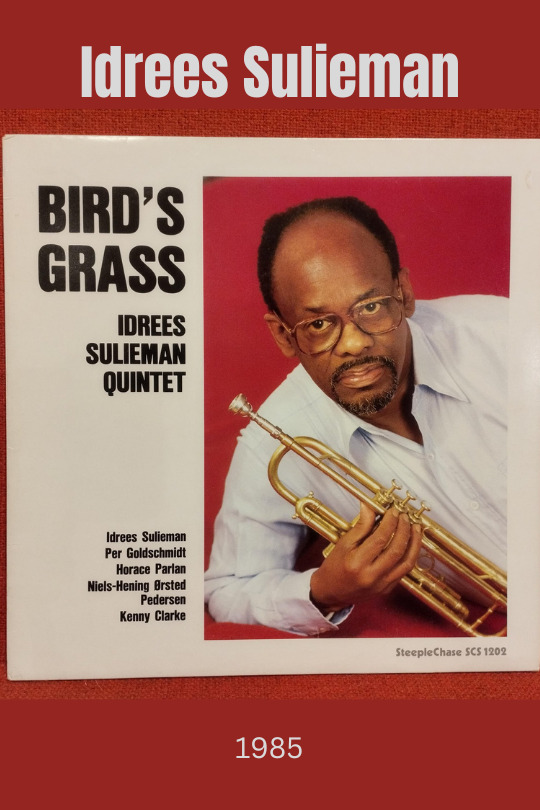
Idrees Sulieman Quintet – Bird’s Grass
Bird’s Grass is a studio album by trumpeter Idrees Sulieman recorded in 1976 but not released on the SteepleChase label until 1985.
The Allmusic review by Scott Yanow awarded the album 4½ stars and stated:”Excellent music with plenty of colorful solos.”
Idrees Sulieman – trumpet, flugelhorn
Per Goldschmidt – tenor saxophone
Horace Parlan – piano
Niels-Henning Ørsted Pedersen – bass
Kenny Clarke – drums
4 notes
·
View notes
Text
'“Oppenheimer” composer Ludwig Göransson guesstimates there’s “about two and a half hours of music in the film,” which he recorded over the course of five days.
The film marks his second collaboration with Christopher Nolan, after the pair first teamed up on 2020’s “Tenet.” Göransson describes the “Oppenheimer” score as “dynamic.”
“Sometimes, it’s just the use of a singular instrument, and other times we bring in a whole ensemble. It fluctuates,” he says. Nolan’s most ambitious film, about the race to create a nuclear bomb during World War II, in turn became Göransson’s most ambitious score — it was different from anything he had done before.
Göransson says Nolan wanted a violin-heavy score for the film, which stars Cillian Murphy as J. Robert Oppenheimer, the father of the atomic bomb. “His thought process was that the violin is a fretless instrument. You can go from the most romantic melodic tone and within a split second turn the tremolo into something neurotic and manic,” the musician explains. So he enlisted his wife, Serena, who is also a violinist.
“Violins have been used a lot in horror movies, and Serena and I looked at how to take that technique of horror clusters and turn it on its head into a beautiful melodic vibrato,” Göransson says. “I had never read a script like that before where he immediately puts you in the mind of Oppenheimer. You’re seeing the world through his eyes. Oppenheimer is a genius, but he also has demons in his closet.”
Musically, that meant he had to establish an unsettling tone from the beginning: “You feel this unease in this character, and it shifts.”
Göransson says the score essentially follows three movements to reflect the different phases of the film, as Nolan follows Oppenheimer’s love of physics into the building of the atomic bomb and the Trinity Test in Los Alamos. There’s also the United States Atomic Energy Commission hearing, woven across several timelines, and Oppie’s romance with Kitty (Emily Blunt) and dalliance with Florence Pugh’s Jean Tatlock.
After Göransson first read the script, and before he started working on the first movement, Nolan invited the composer to an IMAX theater to screen some of the visual experiments he was working on. “I remember being in the theater and being hit with fluorescent lights. That was so jaw-dropping for me, and that’s how I wanted the music to sound,” Göransson says. He knew he needed a live string orchestra, but his biggest challenge was how to capture the energy and movement through tempo.
Göransson explains, “It starts with a haunting melody, which starts off as an intimate solo violin. When you see him in class, there’s one person followed by four people joining him. So we added four violins, and when the whole class shows up, we have an entire orchestra come in.”
For the scene in which physicist Niels Bohr (Kenneth Branagh) asks Oppenheimer if he can “hear the music,” Göransson created a two-minute piece with 21 tempo changes. “I thought we had to do it in segments and record it bar by bar,” he says. “But Serena said, ‘They’re great musicians, why don’t we try different recording techniques and figure out how to do it in one continuous take?’ So, we figured out a way to do it, and that’s why you hear this crazy energy that is causing that momentum.”
Thumping bass and metallic ticking, like a clock, define the second music movement, as the race to build the atomic bomb kicks off. When Oppenheimer and Co. launch the famous Trinity test of the nuclear weapon, the film cuts to silence. “Once he presses the button, there’s no turning back,” Göransson says. “And that’s how it all builds up towards that piece of silence.”
But it wasn’t until Göransson was watching the finished film that he realized he had used no drums at all. “There are some [percussive] elements such as the foot stomps or the explosion, but it’s so cathartic because there aren’t those bombastic sounds,” he says of the decision to use strings, piano and harps to give “Oppenheimer” an emotional core.
For the film’s climactic third act, focused on the aftermath of the bomb and Oppenheimer’s hearing, Nolan asked Göransson to come up with a “20-minute piece of music with a lot of action and high stakes.” As Nolan began editing, he asked Göransson to come up with another 15-minute piece.
Oh, and did he mention the entire score was recorded within five days? “It was a tremendous, crazy recording session, and we had a lot of music to record in a very short amount of time,” Göransson says. “But we did it with an incredible group of live musicians.”'
#Ludwig Göransson#Oppenheimer#Christopher Nolan#Tenet#Cillian Murphy#Kitty#Emily Blunt#Florence Pugh#Jean Tatlock#Niels Bohr#Kenneth Branagh
5 notes
·
View notes
Text

NIEL | A to Z
#teen top#gifs#2022#gif#k-pop#kpop#lowqteentopgifs#my gifs#teen top gifs#solo: niel: a to z#solo: niel#niel#era : a to z
8 notes
·
View notes
Text
youtube
니엘 (NIEL) - 'A to Z' M/V
14 notes
·
View notes
Text
ATEEZ's San once again apologizes for his 'controversial' glove + makes an interesting suggestion for fans

On January 5, boy group ATEEZ and TEEN TOP member/solo artist Niel appeared as guests on the SBS power FM radio program 'Cultwo Show'.
On this day, host Hwang Chi Yeol complimented ATEEZ for their stable live singing on stage, despite their rigorous choreography. To this, Hongjoong sheepishly remarked, "We do our best to sing and rap live, no matter the circumstances."
Also on this day, member San was asked to "clarify" his rather "controversial" glove, which previously caused a stir on online communities for making it seems as if the ATEEZ member was holding up his middle finger.
San explained, "That was definitely not intentional. It's just accidental. That is the glove that I frequently wear on stage, but it only has two fingers, the thumb and the forefinger. When I make a V sign wearing that glove, the forefinger sometimes disappears. But I had no intention of throwing a curse at anyone!"
The idol then made an interesting suggestion that brought many listeners laughter. He said, "But I do feel very apologetic toward fans who may have been on the receiving end of that accidental occurrence, so I personally would be okay if on a really bad day, if our fans are feeling really pissed, they can give me a middle finger once in a while!"
Meanwhile, Niel also mentioned his close friendship with ATEEZ's Jongho on this day, as he jokingly commented, "I met Jongho when he was younger, and he wasn't that good of a dancer back then."

Credit: Allkpop
9 notes
·
View notes
Text

No es Aznar pariente suyo o solo yo veo el parecido físico?
Henry Moseley, el joven que ordenó el rompecabezas de la tabla periódica y podría haber sido nominado tanto al Premio Nobel de Física como al de Química, pero falleció en 1915, a la temprana edad de 28 años, mientras luchaba con el ejército inglés.
Antes de Moseley y su ley, los números atómicos se consideraban como un número ordenante semiarbitrario, que aumentaba vagamente con el peso atómico, pero que no estaba estrictamente definido por él. El descubrimiento de Moseley mostró que los números atómicos no se asignaban arbitrariamente, sino que tenían una base física definida. Moseley postuló que cada elemento sucesivo tiene una carga nuclear exactamente una unidad mayor que su predecesor. Moseley redefinió la idea de los números atómicos de su estado anterior como una etiqueta numérica ad hoc para ayudar a clasificar los elementos en una secuencia exacta de números atómicos ascendentes que hacían exacta la Tabla Periódica. (Más tarde, esto sería la base del principio de Aufbau en los estudios atómicos).
Cuando estalló la Primera Guerra Mundial en Europa Occidental, Moseley dejó atrás su trabajo de investigación en la Universidad de Oxford para trabajar como voluntario en los Ingenieros Reales del Ejército Británico. Moseley fue asignado a la fuerza de soldados del Imperio Británico que invadió la región de Gallipoli, Turquía, en abril de 1915, como oficial de telecomunicaciones. Moseley fue asesinado a tiros durante la Batalla de Gallipoli el 10 de agosto de 1915, a la edad de 27 años. Los expertos han especulado que, de lo contrario, Moseley podría haber recibido el Premio Nobel de Física en 1916.
El científico Robert Millikan escribio sobre la muerte de Moseley:
“En una investigación que está destinada a clasificarse como una de las doce más brillantes en concepción, hábil en ejecución e iluminadora en resultados en la historia de la ciencia, un joven de veintiséis años abrió las ventanas a través de las cuales podemos vislumbrar el mundo subatómico con una definición y certeza nunca antes soñada. Si la guerra europea no hubiera tenido otro resultado que la extinción de esta joven vida, eso solo la convertiría en uno de los crímenes más horribles e irreparables de la historia."
Niels Bohr dijo en 1962 que el trabajo de Rutherford "no se tomó en serio en absoluto" y que "el gran cambio provino de Moseley".
George Sarton escribió: "Su fama ya estaba establecida sobre una base tan segura que su memoria será verde para siempre. Es uno de los inmortales de la ciencia, y aunque habría hecho muchos otros aportes a nuestro conocimiento, si se le hubiera perdonado la vida.
Las contribuciones ya acreditadas a él fueron de una importancia tan fundamental, que la probabilidad de que se superara a sí mismo era extremadamente pequeña. Es muy probable que, por larga que fuera su vida, habría sido recordado principalmente por la 'ley de Moseley' que publicó a la edad de veintiséis años".
Isaac Asimov escribió: "En vista de lo que él [Moseley] aún podría haber logrado ... su muerte bien podría haber sido la muerte más costosa de la guerra para la humanidad en general".
Rutherford creía que el trabajo de Moseley le habría valido el Premio Nobel (que, sin embargo, nunca se otorga póstumamente).
2 notes
·
View notes
Text
Scheduled New Releases: December 2022 - Week 1
This list will continually be updated when MVs, iTunes/Apple Music, Spotify, & YouTube Music links & additional new release information becomes available.
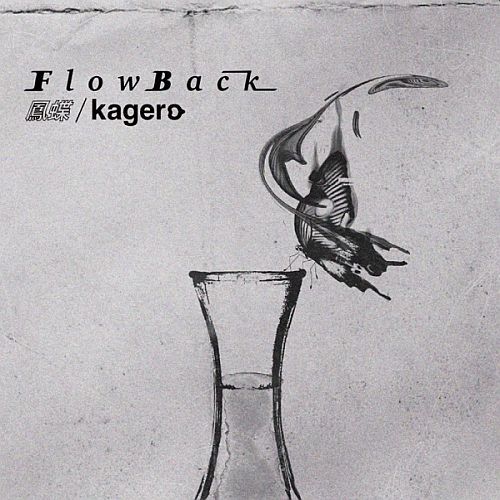
FlowBack - Ageha / kagero (Single)
Track: Ageha [MV]
Release Date: November 27th
[Apple Music/iTunes] [Spotify] [YouTube Music]

Red Velvet - The ReVe Festival: Birthday (10th Mini-Album)
Title Track: Birthday [MV]
Release Date: November 28th
[Apple Music/iTunes] [Spotify] [YouTube Music]
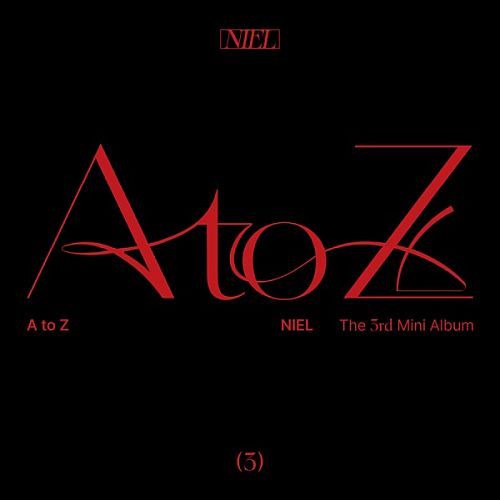
Niel (of TEEN TOP) - A to Z (3rd Mini-Album)
Title Track: A to Z [MV]
Title Track: In Your Space [MV]
Release Date: November 28th
[Apple Music/iTunes] [Spotify] [YouTube Music]

Mill (of OnlyOneOf) - beat (Single) [MV]
undergrOund idOl #5
Release Date: November 28th
[Apple Music/iTunes] [Spotify] [YouTube Music]

Yuma Nakayama - Step!! (Digital Single) [MV]
Release Date: November 28th
[Apple Music/iTunes] [Spotify] [YouTube Music]
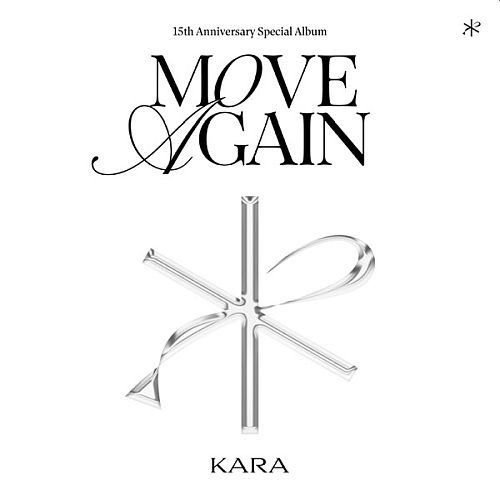
KARA - Move Again (15th Anniversary Album)
Title Track: When I Move [MV]
Release Date: November 29th
[Apple Music/iTunes] [Spotify] [YouTube Music]

TREASURE - The Second Step: Chapter Two (Japanese Version) (2nd Japanese Mini-Album)
Title Track: Hello (Japanese Version) [MV]
[highlight medley]
Release Date: November 30th
[Apple Music/iTunes] [Spotify] [YouTube Music]
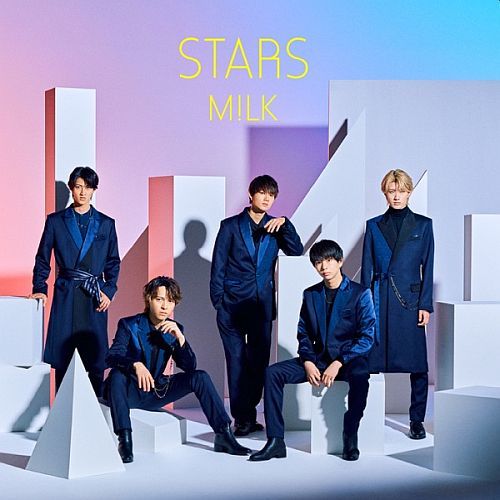
M!LK - Stars (Single) [MV]
Release Date: November 30th
[Apple Music/iTunes] [Spotify] [YouTube Music]
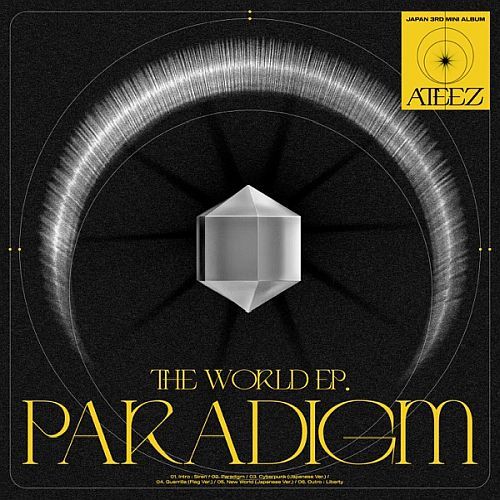
ATEEZ - The World Ep.Paradigm (3rd Japanese Mini-Album)
Title Track: Paradigm [Performance MV]
[highlight medley]
Release Date: November 30th
[Apple Music/iTunes] [Spotify] [YouTube Music]

THE RAMPAGE from EXILE TRIBE - Round Up (feat. MIYAVI) / KIMIOMOU (18th Single)
Track: Round Up (feat. MIYAVI) [MV]
Track: Kimiomou [MV]
Release Date: November 30th
[Apple Music/iTunes] [Spotify] [YouTube Music]

ITZY - Cheshire (6th Mini-Album)
Title Track: Cheshire [MV]
[highlight medley]
Release Date: November 30th
[Apple Music/iTunes] [Spotify] [YouTube Music]
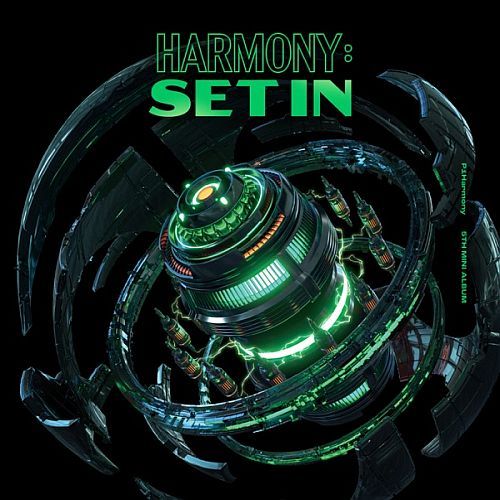
P1Harmony - Harmony: Set In (5th Mini-Album)
Title Track: Back Down [MV]
[highlight medley]
Release Date: November 30th
[Apple Music/iTunes] [Spotify] [YouTube Music]

XEED - Dream Land (Debut Mini-Album)
Title Track: Dream Land [MV]
Release Date: December 1st
[Apple Music/iTunes] [Spotify] [YouTube Music]

RM (of BTS) - Indigo (Solo Debut Album)
Title Track: Wild Flower (feat. Cho Youjeen) [MV]
Release Date: December 2nd
[Apple Music/iTunes] [Spotify] [YouTube Music]

Hong Jinyoung - Girl in the Mirror (2nd Mini-Album)
Title Track: Girl in the Mirror [MV]
[highlight medley]
Release Date: December 2nd
[Apple Music/iTunes] [Spotify] [YouTube Music]

Yein (of Lovelyz) - Bus (Digital Single) [MV]
Release Date: December 2nd
[Apple Music/iTunes] [Spotify] [YouTube Music]
8 notes
·
View notes
Text
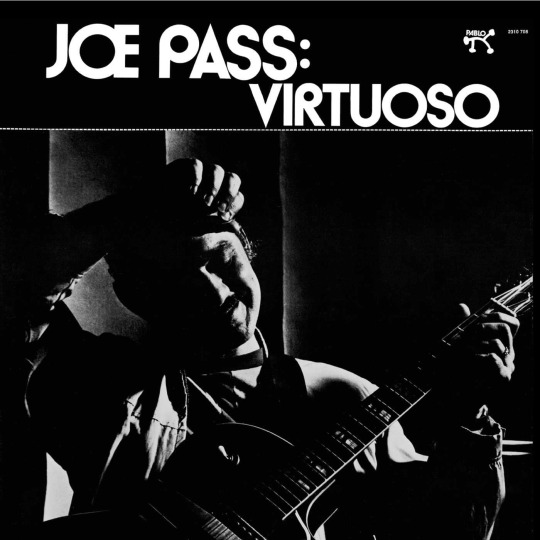
Storia Di Musica #231 - Joe Pass, Virtuoso, 1973
Mariano Passalacqua, nato a Gualtieri Sicaminò, in provincia di Messina, ma emigrato da bambino negli Stati Uniti, non avrebbe mai immaginato che il regalo scelto per il nono compleanno di suo figlio, Joseph Antony, diventerà centrale per la storia della chitarra jazz: alla fine degli anni ‘30 una Harmony di 17 dollari che tra le mani del piccolo diviene qualcosa di straordinario. Perché a Joseph basta ascoltare una melodia per impararla subito ad orecchio, e le feste in famiglia sono l’occasione per suonare i classici della canzone italiana tanto amati dal padre, che non era un musicista ma operaio in una acciaieria della Pennsylvania. Già da adolescente girava l'America con diversi gruppi jazz, migliorando le sue capacità chitarristiche, finché traslocò dalla Pennsylvania a New York; qui successero due cose: la prima, scelse come nome d’arte Joe Pass, nome che lo consegnerà alla storia del jazz, la seconda fu la droga, che lo portò in carcere durante gli anni '50. Tornò a suonare in maniera definitiva la chitarra durante i due anni e mezzo passati nel centro di riabilitazione di Synanon, celebrati nel suo primo grande disco del 1962, The Sounds of Synanon. Pass riusciva a far convivere notevole tecnica e la grande conoscenza dello strumento, divenne una sua firma musicale l’uso chitarristico del walking bass (la scansione di tutti i quarti della battuta, tipica del Contrabbasso): tecnicamente impressionante, capace di dare un senso anche a lunghe esibizioni da solo, si afferma all’inizio non come solista ma come musicista al fianco dei più grandi artisti dell’epoca. La carriera di Joe decolla, la prestigiosa rivista del jazz Down Beat lo incorona “nuova stella” e nei successivi dieci anni fino a metà degli anni settanta, incide dischi e collabora con decine di artisti di elevato calibro: ricordo che suonò in diversi dischi di, tra gli altri, Earl Bostie, Julie London, Eddie “Cleanhead” Vinson, Chet Baker, Carmen McRae, Frank Sinatra, Donald O’Connor, Della Reese, Leslie Uggams, Steve Allen, Johnny Mathis. Scriverà anche un fortunatissimo manuale, Joe Pass Guitar Style (scritto con Billy Thrasher), che è ancora oggi considerato uno dei libri più importanti per imparare a suonare le improvvisazioni per la chitarra jazz. L’incontro della vita lo ebbe nel 1970, quando incontra Norman Granz. Granz era il produttore di Jazz At The Philharmonic e fondatore della Verve Records, una delle etichette più leggendarie del jazz. Fa firmare un contratto a Pass per una nuova e giovane sua etichetta, la Pablo Records. La quale iniziò a pubblicare i lavori di tre giganti sotto contratto per Granz: Oscar Peterson, Ella Fitzgerald e Joe Pass. I tre legheranno le proprie storie musicali in dischi meravigliosi: The Trio, del 1974, con Oscar Peterson, Joe Pass e il bassista Niels-Henning Ørsted Pedersen, registrato live alla London House di Chicago, vincitore nel 1975 del Grammy per Best Jazz Performance by a Group; Ella And Oscar nel 1975 e la serie Take Love Easy con Pass, in una serie di dischi Take Love Easy (1974), Fitzgerald And Pass... Again (1976), Speak Love (1983) e Easy Living (1986). Pass suonò anche in uno dei dischi più belli della Fitzgerald, Ella Abraça Jobim (1981) dove la grande cantante riprende il repertorio del leggendario compositore brasiliano Antônio Carlos Jobim. Nel 1973 Pass pubblica anche un nuovo disco solista, il primo di una tetralogia, dal titolo Virtuoso. Quello del 1973 è unanimemente considerato uno dei più grandi dischi per chitarra jazz e il suo capolavoro. Solo lui e la sua chitarra, niente accompagnamento, niente sovraincisioni, nella maggior parte dei brani non usa neanche l’amplificatore, ma registra la sua Gibson Es 175 con un microfono posto davanti alla cassa. Le idee di Pass sono lì, in vista: melodia sempre chiara e in primo piano, accompagnamento armonizzato per arricchire e tenere viva la tensione, walkin’ bass per dare swing e tiro, tutto eseguito con una semplicità che fa invidia. In scaletta un solo brano autografo, Blues For Alican, per il resto il meglio degli standard jazz: Night and Day (Cole Porter), All The Things You Are (Jerome Kern), una versione mozzafiato di Round Midnight (Thelonious Monk, Cootie Williams), una strepitosa The Song Is You di Jerome Kern, che apre tutta una serie di riprese di famosissime canzoni da musical e dal cinema: Stella By Starlight dal film La Casa Sulla Scogliera, How High The Moon da Two For The Show e My Old Flame da Belle Of The Nineties tra gli altri. Il disco fu un successo anche di vendite e nella prestigiosa The Penguin Guide To Jazz Recordings è annoverato nella super esclusiva “Core Collection” degli album essenziali della storia del jazz. A proposito delle registrazioni con Ella, Joe Pass raccontò: «Non l’avevo mai incontrata prima del giorno della registrazione. Non avevo idea di cosa volesse provare, o in che chiavi cantasse. Lei arriva e attacca con un brano. “In che chiave?” le chiedo. “Be’…” e canticchia qualcosa. Trovo la chiave e registriamo l’intero album. Senza prove, semplicemente scivolando tra i brani. In tutti i duetti che abbiamo fatto, quattro album in tutto, mai una prova». Pass con la Fitzgerald e Peterson farà diversi tour mondiali, memorabili esibizioni, di tre giganti che davvero sono dei pilastri del jazz. Sul suonare, Pass in un famoso video documentario (An Evening with Joe Pass, del 1994, pochi anni prima che un male incurabile lo porti via al mondo e alla musica) disse: Non puoi pensare e suonare allo stesso tempo. Se pensi a quello che stai suonando, quel che suoni diventa pomposo, artificiale. Penso che devi solo concentrarti sulla musica, e lasciare che la musica esca da sola. La musica è come il linguaggio. Hai una collezione di idee musicali e pensieri che hai accumulato durante la tua storia musicale, più tutta la musica del mondo, è tutto nel tuo inconscio, e devi pescare da lì.
21 notes
·
View notes